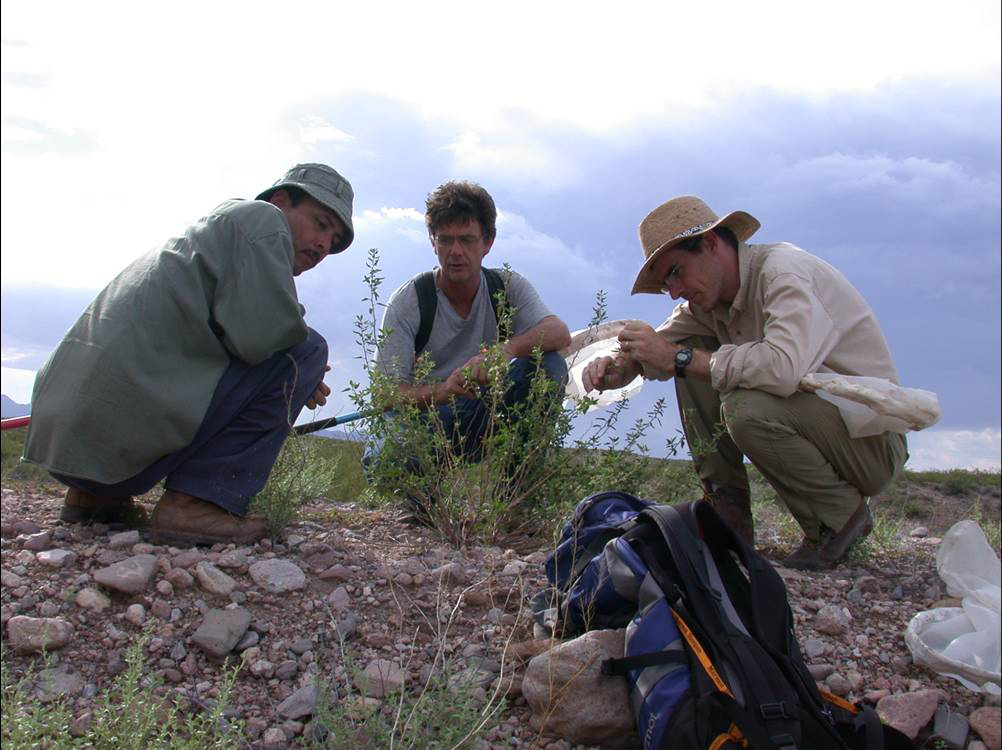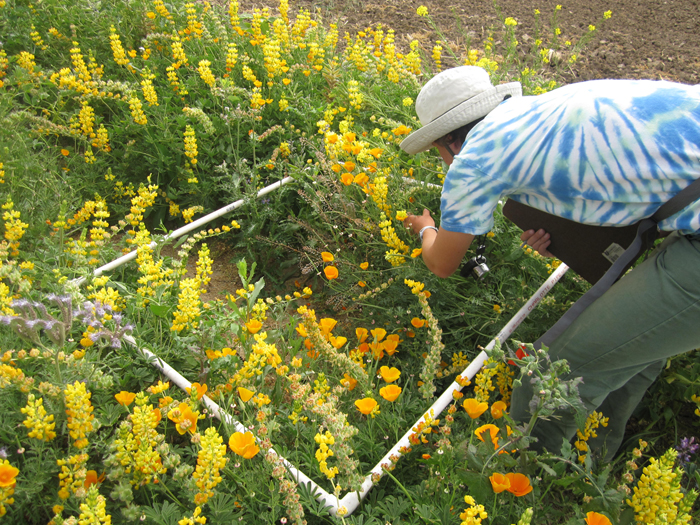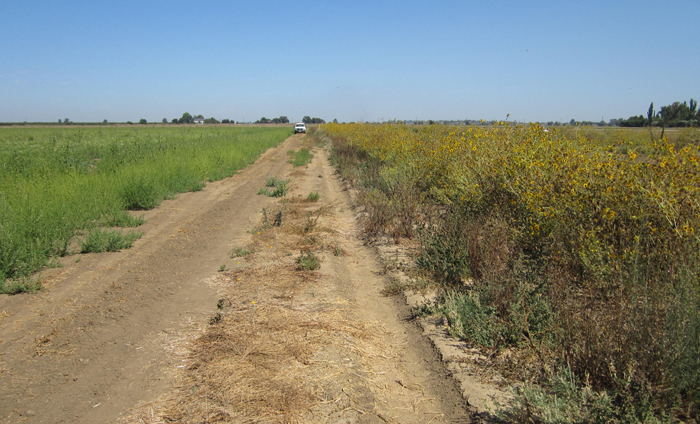Bee Biology, ecology and life history
One main theme of our program is building a spatially informed understanding of population and life history for wild bees in space and time. We are interested in how bee movement, landscape structure and habitat quality intersect with intrinsic characteristics of bees to determine individual and population responses.
Bumble bees:
Much of this work focuses on native bumble bees and involves collaboration with graduate students and postdocs here at UC Davis and with colleagues at Tufts University and UC Riverside.
In one project we are exploring how resource dynamics affect colony-level demography of Bombus vosnesenskii. We use a combination field studies, where we track the fates of individual workers and their foraging using mark recapture and “fancy” RFID technology, and demographic models, which incorporate field data to project outcomes for colony persistence and population dynamics.
Students are using current molecular methods to reveal within and among generation movement patterns of bumble bees at different life stages.
Solitary bees:
We also consider impacts of resource dynamics and environmental stressors on the various life history parameters for solitary bees. Recent work focuses on Osmia lignaria, where we have subjected separate groups of females to combined resource and pesticide stressors to reveal additive and carryover effects on reproductive success.
We are also exploring how solitary bee behavior and life-history allocation changes as bees age and experience different resource environments.
Pollinators, pollination and landscape change
Much of my current research examines how landscape change affects native bees and the pollination they provide to wild and managed plant populations. Throughout these investigations I attempt to identify mechanisms that underlie the patterns we see at the level of communities across landscapes.
Current projects include:
- The importance of landscape connectivity for the persistence of pollinators in the mosaic landscapes associated with agriculture. This work uses a combination of field manipulations and spatially explicit modeling of resources across the landscape. Rather than adopting a habitat -non-habitat dichotomy, I view these landscapes as mosaics of different habitats of varying quality with respect to different resources such as floral resources and nesting sites. Connectivity among complementary habitat types may therefore be critical to population persistence.
- The effect of different ecological and life history traits on bee responses to habitat degradation and landscape modification. Analyses explore differential responses of bees to agricultural intensification and habitat restoration.
- The temporal and spatial variation of insect-flower interactions at the community level and how these webs (bi-partite networks) are affected by habitat type.
- Spatial and temporal stability in pollinator communities and pollination service
RESTORATION OF Pollinator Habitat
This research program seeks to identify mixtures of native forb species whose flowers best support abundant and diverse pollinators within agricultural landscapes.
Funding is through the Foundation for Food and Agriculture and support from the FIND Foundation.
Phase 1. Testing different plant mixes for attractiveness to pollinators.
Phase 2. Testing ability of a “best mix” to support diverse pollinators over the growing season. Identify whether large scale plantings of the mix can enhance pollination service to adjacent crops under large-scale cultivation. Determine best methods for cultivation and management within the context of a production farm.
We want our approach to be one that farmers can practically adopt and that can effectively enhance pollinator numbers and diversity without increasing pest pressure.
Photos of Mixes during the 2011 Season.
Note seed watermelon field with some border weeds to the left in the photograph. By August early season flowers in the forb mix to the right have died back and later season sunflowers and gumweed dominates
Foraging specialization versus specialist pollinators
Another major interest of mine is in the ecology and evolution of trophic specialization by bees and how differences in specialization by these foragers affects their quality as pollinators and thus their potential influence on floral evolution. My approach to such pollination interactions embraces the idea that bees are nectar-and-pollen-eaters rather than simply pollinators. Their behavior at the level of individual flower interactions, movements among flowers, choices of host individuals and use of different host species is influenced by current ecological context and by selection for efficient foraging rather than for pollen transfer. The flowering plants from which these bees feed are selected to manipulate bee foragers to affect efficient pollen transfer.
Contributions of specialist and generalist pollinators

Plant species are often visited by combinations of specialist (oligolectic) and generalist (polylectic) bees. Although specialists may be superior pollinators because of fidelity to their host plant, they should be selected for efficient foraging on their host, but not for particularly effective pollen transfer. This means they might remove pollen from the system making them potentially inefficient pollinators or even pollen thieves. We are investigating pollen transfer dynamics by specialist and generalists bees that share the same host. This work is ongoing in Chihuahuan desert and in Mid-Atlantic woodland. Focal plant species include desert mallow, Opunita cacti, spring beauty and others.


